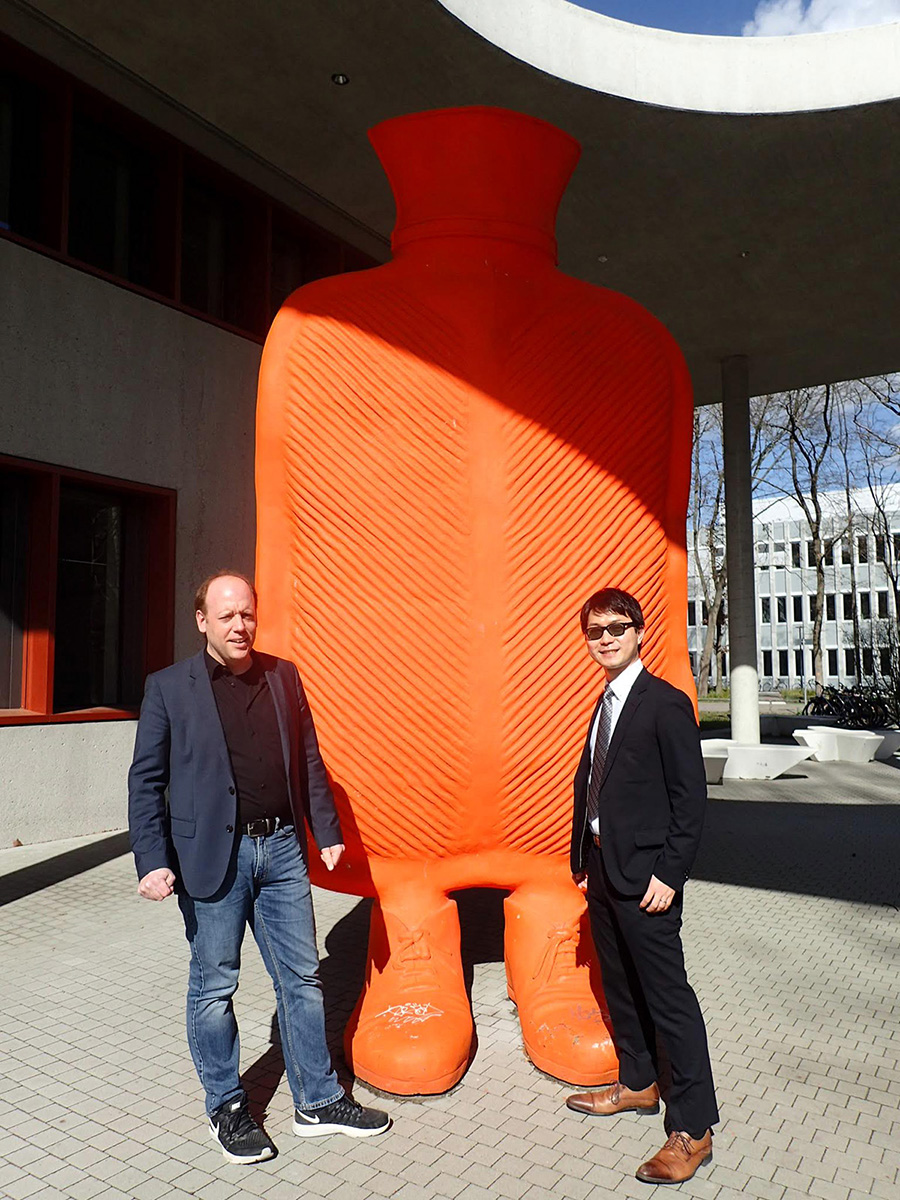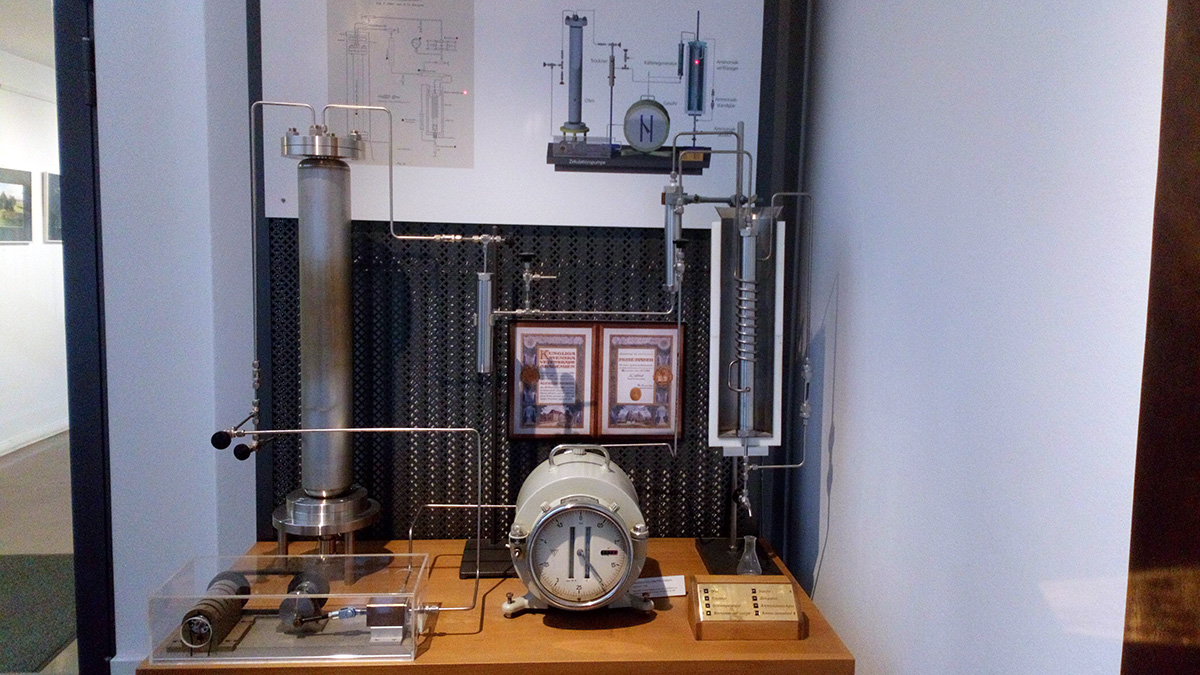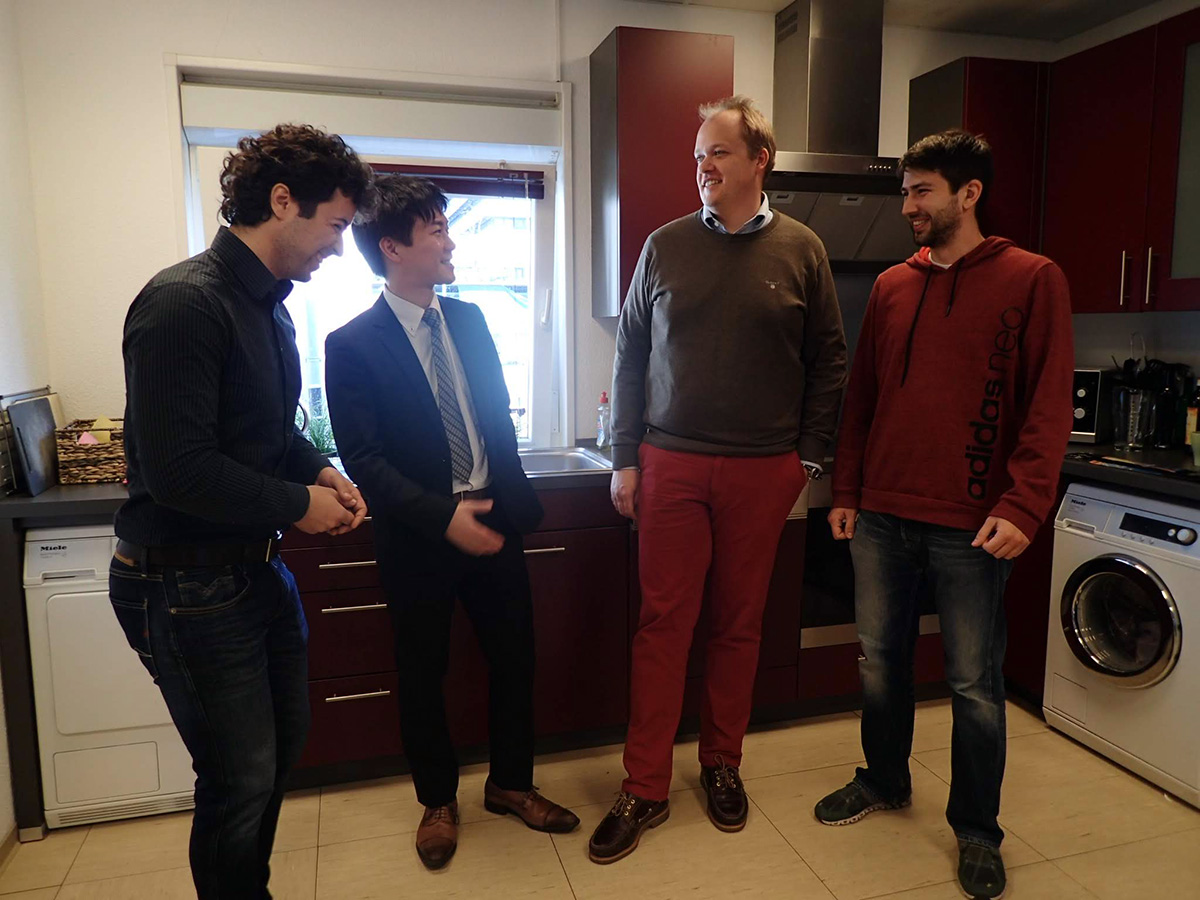Host Institution:
- Dr. Takashi Kumagai, Research Group Leader, Fritz-Haber-Institut der Max-Planck-Gesellschaft (Berlin)
Visited Researchers and Institutions:
- Prof. Alexander Colsman, Professor, Karlsruhe Institute of Technology (KIT)Energy Center
Duration of stay:March 6-21, 2019
Aims:
- Establishing Collaboration with German researchers for preparing samples for direct observation of a novel proton conduction mechanism proposed by the ECR
- Networking with researchers working on proton conduction research in Germany
- Networking with researchers related to HeKKSaGOn (German-Japanese University network)
Motivation for AIDA application
Collaborative research network for observing behavior of protons.
Proton conduction phenomena are important in many research fields. However, there are few studies directly observing their behavior because of protons’ fast movement. I have theoretically proposed a new proton conduction mechanism called “packed-acid mechanism”, but have not been able yet to show its actual movement based on the mechanism. Meanwhile, Dr. Kumagai, a research group leader in the Fritz-Harber-Institut, succeeded to observe proton transfer directly by using a scanning tunneling microscope (STM). Moreover, the spectroscopy techniques of this institute are world class, and it has many unique custom-made instruments. I thought about setting up a collaborative research network in which Kyoto University could provide samples and Fritz-Harber-Institut technology for observation. This would be beneficial for both research institutions and the development of science as a whole. Therefore, I applied for this program.
Results
Established collaboration with Fritz-Haber-Institut and KIT Energy Center.
I had an opportunity to give a talk on the packed-acid mechanism, to exchange opinions with researchers and to conduct a tour at the laboratory. I was able to obtain a deep insight into observation techniques other than STM possessed by the Institute, and obtained directions on important conditions for samples in which the movement of protons in packed-acid mechanism can be observed. Moreover, it turned out that observation technology can be applied also to the new catalyst for ammonia synthesis.
My next destination was the Energy Center at Karlsruhe Institute of Technology (KIT), which is closely collaborating with Kyoto University through HeKKSaGOn (a network of six universities in Japan and Germany) and the Kyoto University European Center in Heidelberg. Professor A. Colsman, who participated in the 6th HeKKSaGOn President’s Meeting (April 2018, Osaka), introduced the laboratory equipment, facilities, and actual experiments. It was a good opportunity to explore the possibility of research collaboration using technologies the Kyoto University laboratory holds.
Prof. Keiichi Ishihara, the head of the group I belong to and the dean of graduate school of energy science accompanied me at this visit. It was an opportunity to explore the possibilityof collaborative research not only on proton conduction but also on various subjects and the possibility of exchanging student on a lab scale.

Meeting with Prof. Alexander Colsmann, the head of KIT in HeKKSaGOn
 The equipment of ammonia synthesis utilized by Fritz Caber
The equipment of ammonia synthesis utilized by Fritz CaberOutlook
I would like to start preparing samples of proton conducting materials and ammonia synthesis catalysts for observation at the Fritz-Harber-Institut. After I got the positive results for the preparation, I would like to apply for funding for international joint research and start collaboration. In addition, we intend to deepen the mutual exchange of students and researchers through the collaboration and construct network that leads to the solution of global issues.
![[間:AI DA]: supporting international carrier development of early career researchers (ECRs)](/exchange/aida/wp-content/themes/kyoto-u-daad/img/logo-aida.png)



